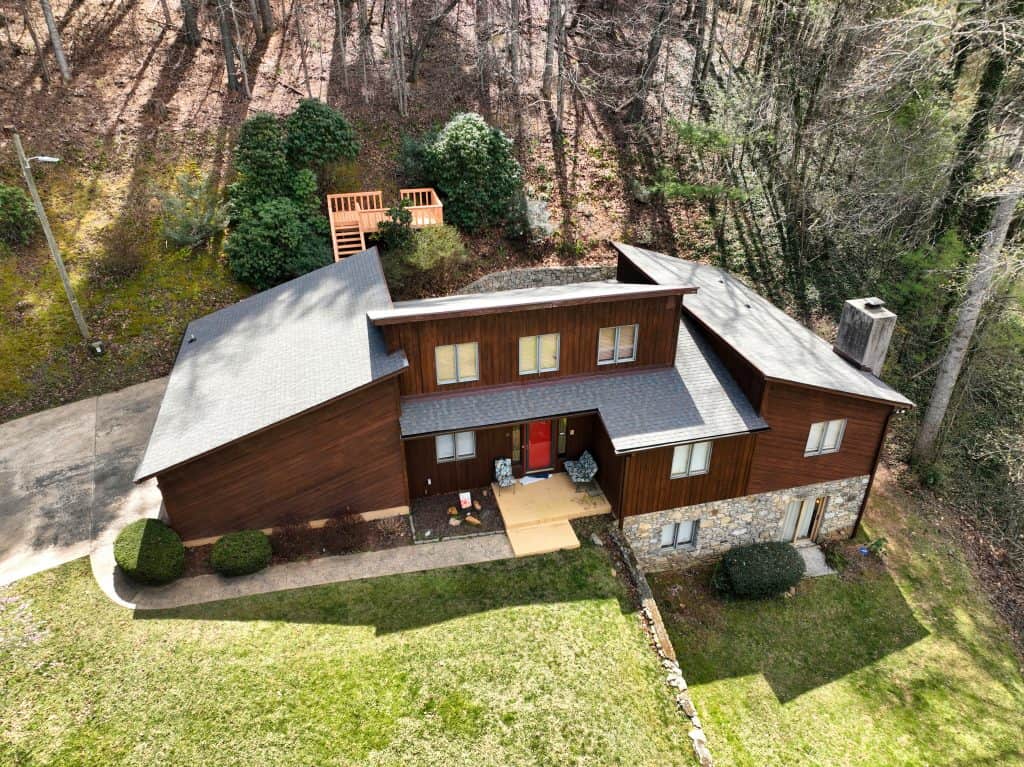A roof replacement is one of the most significant investments a homeowner can make, involving not only a substantial financial outlay but also a considerable time commitment. It’s a crucial project that directly impacts the safety, durability, and value of your home. However, without proper planning and attention to detail, what should be a straightforward upgrade can turn into a source of long-term headaches and unforeseen costs. To help you navigate this process smoothly and get the best results, here are six key mistakes to avoid when tackling your residential roofing replacement project.
Overlooking the Importance of a Thorough Inspection
One of the most critical mistakes homeowners can make is diving into a roof replacement project without first conducting a comprehensive inspection. A roof isn’t just about shingles—it’s a complex system that relies on a sound structure, proper ventilation, and moisture control. Skipping this essential step can mean overlooking hidden issues like water damage, wood rot, mold growth, or even compromised structural components. These problems, if left undetected, can escalate into major complications during or after the replacement process, potentially requiring additional repairs and driving up costs. By neglecting to assess the roof’s current condition, homeowners may expose themselves to the hidden risks of roof replacement, which can lead to unforeseen expenses down the line. Engaging with a professional contractor during the inspection phase can help identify these potential issues early, allowing for a smoother and more efficient replacement process. Ultimately, a thorough examination not only protects your investment but also ensures the longevity and safety of your new roof.
A professional inspection ensures that any underlying issues are identified and addressed before the roof replacement begins. For example, insufficient ventilation can shorten the lifespan of your new roof by trapping excess heat and moisture, while undetected rot or damage could weaken the roof’s foundation and jeopardize its integrity. These are problems you don’t want to discover halfway through the project—or worse, after the new roof is installed.
To avoid these pitfalls, we recommend hiring a reputable local contractor, like Lane Roofing Restoration, who has the expertise and experience to thoroughly assess your roof’s condition. A detailed inspection will provide a clear understanding of your roof’s needs, allowing for a smoother replacement process and ensuring your investment delivers long-term protection and peace of mind.
Inappropriate Material Selection
Choosing the right roofing material is about more than just enhancing your home’s curb appeal—it’s a decision that directly affects the performance, longevity, and maintenance requirements of your roof. One of the most common mistakes homeowners make is prioritizing appearance over functionality, selecting materials that may look great but aren’t suited to their local climate or specific needs.
For instance, in areas with heavy rainfall, snow, or high winds, materials with excellent weather resistance are essential. In hot climates, reflective or heat-resistant options can improve energy efficiency and keep your home cooler. Durability and maintenance requirements also vary widely among materials—what might seem like an affordable choice initially could require frequent repairs or replacements, leading to higher costs over time.
Consulting with roofing professionals is crucial to making an informed decision. Experts can assess your home’s specific requirements, including structural considerations and environmental factors, and guide you toward materials that strike the right balance between functionality, aesthetics, and budget. By selecting the appropriate materials, you’ll ensure your new roof not only looks great but also stands the test of time.
Neglecting Proper Ventilation
Proper ventilation is a vital but often overlooked component of a well-functioning roof. Ignoring the need for adequate airflow can lead to a host of issues that undermine the performance and longevity of your roof. Without proper ventilation, heat and moisture can build up in your attic, accelerating the deterioration of roofing materials and creating ideal conditions for mold and mildew growth.
In colder climates, poor ventilation can contribute to the formation of ice dams—dangerous ridges of ice that prevent melting snow from draining off the roof. This trapped water can seep under shingles and cause leaks, leading to costly repairs. In warmer climates, inadequate ventilation increases your home’s internal temperature, forcing your HVAC system to work harder and driving up energy bills.
When planning your residential roofing replacement, be sure to prioritize ventilation as part of the project scope. A well-ventilated roof not only extends the lifespan of your roofing materials but also prevents moisture-related complications, regulates attic temperatures, and improves energy efficiency. Consulting with experienced professionals ensures your new roof is properly ventilated, protecting your home and investment for years to come.
Failure to Obtain Necessary Permits and Adhere to Regulations
One of the most avoidable mistakes in a roofing replacement project is overlooking the importance of permits and compliance with local building codes. Some homeowners assume that replacing a roof is a straightforward task that doesn’t require formal approval, but this misconception can lead to serious consequences. Local governments and municipalities often have specific regulations regarding roofing projects, from the types of materials allowed to the methods of installation.
Failing to secure the necessary permits or meet building code requirements can result in costly delays, fines, or even having to redo parts of the project. In some cases, non-compliance can also complicate future property sales, as home inspections may uncover unpermitted work that needs to be rectified.
To avoid these issues, take the time to consult your local government or municipality and familiarize yourself with the requirements for your roofing replacement project. A reputable contractor, like Lane Roofing Restoration, can often assist with navigating these regulations and obtaining the proper permits. Ensuring compliance not only protects you legally but also guarantees that your new roof meets safety and quality standards, giving you peace of mind.
Compromising Quality for Cost
Sticking to a budget is important when replacing your roof, but prioritizing the cheapest option over quality can lead to bigger expenses in the long run. A low-cost choice often comes with hidden risks, such as subpar materials, inadequate installation, or a lack of durability. These compromises can result in frequent repairs, reduced energy efficiency, and even the need for an earlier replacement—all of which end up costing more over time.
Instead, aim to strike a balance between cost and quality. Obtain multiple estimates from trusted contractors, but don’t evaluate them on price alone. Look closely at the quality of materials proposed, the contractor’s reputation, and the warranties offered for both labor and materials. A slightly higher upfront cost for premium materials and skilled workmanship can save you from costly headaches down the road, ensuring your new roof is a worthwhile investment that lasts.
By choosing quality over cost-cutting measures, you’ll protect your home, enhance its value, and enjoy peace of mind for years to come.
Lack of a Written Contract
Embarking on a roofing project without a comprehensive written contract is a gamble no homeowner should take. A detailed contract serves as the foundation for clear communication and mutual understanding between you and your contractor. Without it, even minor disagreements can escalate into costly disputes, delays, or unmet expectations.
A solid written contract should include all critical details, such as:
- Scope of Work: Clear descriptions of the project, including specific tasks and any necessary preparatory or follow-up work.
- Costs: A breakdown of materials, labor, and any additional fees, ensuring transparency in pricing.
- Timeline: Start and completion dates, including contingencies for potential delays.
- Warranties: Coverage details for both materials and workmanship, so you know what is protected and for how long.
- Payment Schedule: Milestones or timelines for payments to keep the project on track without surprises.
Having everything in writing protects both parties and ensures the project progresses smoothly. It also provides you with a reference point should any misunderstandings or issues arise during the process. Always work with a contractor who prioritizes a thorough written agreement—it’s a key step in safeguarding your investment and avoiding unnecessary complications.
Helping You Through the Roof Replacement Process
At Lane Roofing Restoration, we’re dedicated to making your roof replacement as smooth and stress-free as possible. From minor repairs to full-scale replacements, our team of experts is here to provide professional guidance, quality materials, and top-notch workmanship.
Whether you’re tackling a small repair for your home or managing a more extensive roofing project for your business, we’ve got you covered. Reach out to us today, and let’s ensure your roofing needs are met with expertise and care. Your satisfaction and peace of mind are our priorities!

